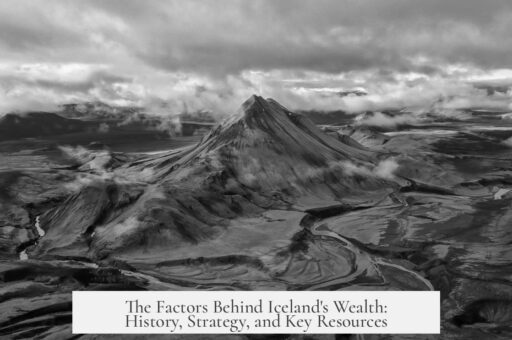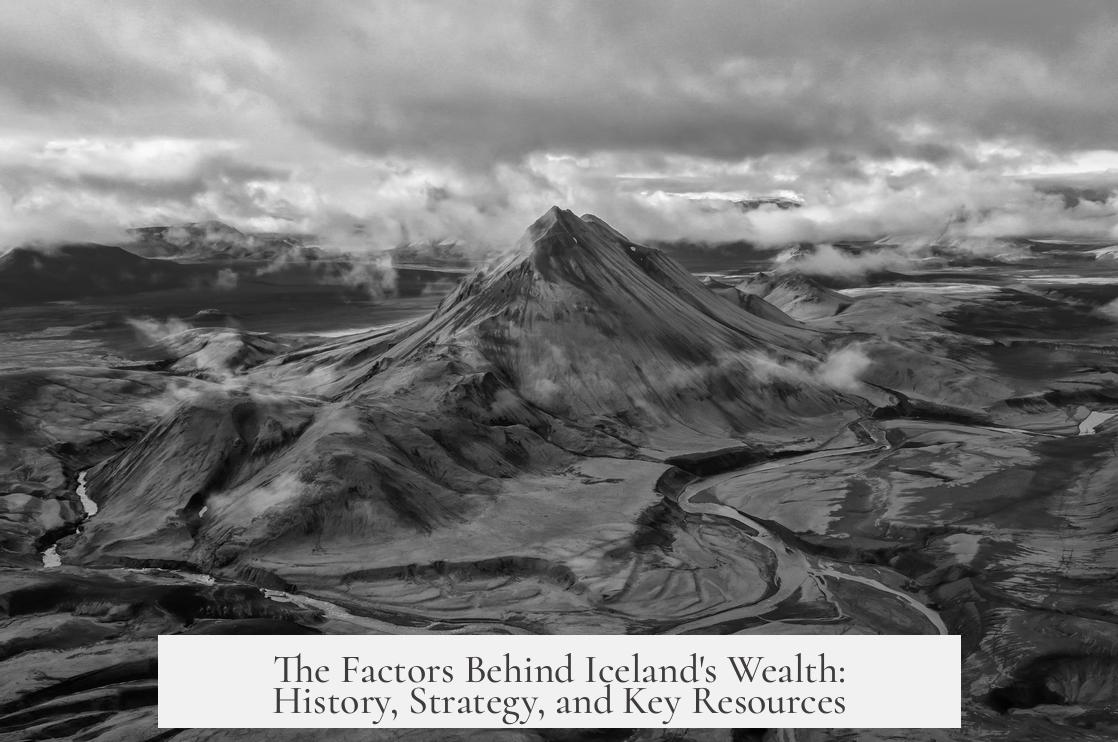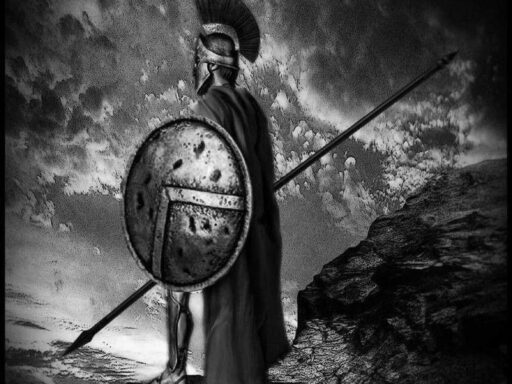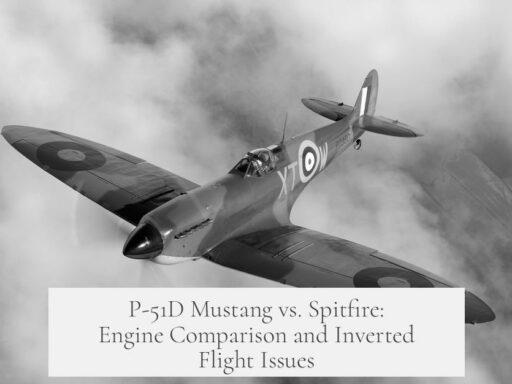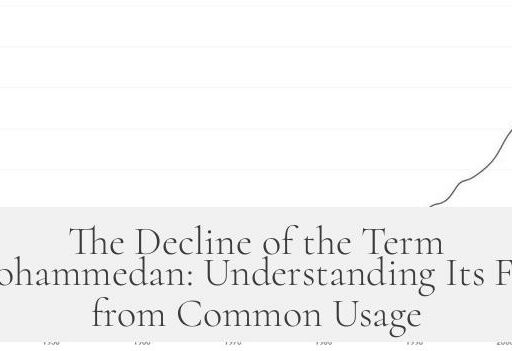Iceland’s wealth stems primarily from its strategic geographic location, effective utilization of natural resources, and pragmatic responses to historical and global events. Over centuries, the island transformed from an impoverished agrarian society into a prosperous nation by focusing on fishing, renewable energy, and international partnerships.
Historically, Iceland faced severe economic hardships. For centuries, plagues, famines, and harsh living conditions limited population growth and economic development. The island lacked large forests and had no maritime self-sufficiency, restricting transportation and trade opportunities. Agriculture was mostly limited to low-productivity sheep farming, and laws like Vistarband prevented development of coastal towns and fishing industries. Consequently, Iceland remained a rural, isolated colony under Danish rule, with limited infrastructure and high infant mortality.
This status began to change in the late 19th century. Icelanders pushed for political autonomy and trade liberalization, inspired by Enlightenment ideals. The Icelandic government invested in coastal infrastructure and fishing fleets, recognizing the ocean’s potential. Reykjavík started to evolve into a modern town, and export-oriented fishing industries emerged as the economic backbone. Fresh and salted fish exports linked Iceland’s economy more firmly to international markets such as the United Kingdom, the United States, Canada, and Spain.
The 20th century brought significant shifts. Although World War I strained Iceland’s economy due to disrupted shipping routes, it also encouraged political self-confidence. Iceland declared sovereignty in 1918, establishing a personal union with Denmark. The outbreak of World War II profoundly affected Iceland: Allied occupation led to a massive influx of troops and investment. Infrastructure projects like roads and airfields were built, and local employment soared. The demand for Icelandic cod increased sharply despite wartime dangers. These developments caused Iceland’s GDP to rise by 38% during the war, contrasting with conditions across much of Europe.
Following the war, Iceland became the highest per-capita recipient of Marshall Plan aid in Europe, receiving roughly $38–39 million. Instead of simply patching failed infrastructure, these funds were strategically used to modernize the fishing industry, develop processing plants, and expand hydroelectric power facilities. Harnessing geothermal and hydropower resources allowed Iceland to shift away from importing expensive coal toward sustainable, affordable energy. This energy transition reduced costs for homes and businesses, facilitating the rise of energy-intensive industries, such as aluminum smelting. Foreign investors found Iceland an attractive destination due to its cheap and clean energy supply.
Iceland also asserted economic sovereignty by expanding its fishing territorial waters in a series of confrontations known as the Cod Wars. These disputes, primarily with Britain, successively extended Iceland’s exclusive fishing zone to 200 nautical miles by 1975. This expansion guaranteed control over highly valuable marine resources, cementing the fishing industry’s role as a pillar of Iceland’s economy.
Throughout the Cold War, Iceland balanced foreign relations carefully. Its strategic location gave it importance for both NATO and the U.S. This geopolitical position provided economic benefits and security guarantees while allowing Iceland to maintain control over critical natural resources and industries.
| Factor | Details |
|---|---|
| Historical Hardship | Repeated plagues, famine, poor agriculture, and colonial restrictions kept wealth low. |
| Fishing Industry Growth | Infrastructure investment and export focus from late 19th century led to industrialization. |
| World War II Impact | Allied occupation brought infrastructure, jobs, and economic stimulus raising GDP substantially. |
| Renewable Energy | Geothermal and hydropower enabled low-cost energy, attracting energy-intensive industries. |
| Cod Wars & Sovereignty | Expansion of fishing waters ensured control over resources and economic independence. |
| Strategic Geopolitical Role | US and NATO alignment during the Cold War provided economic and security advantages. |
Overall, Iceland’s wealth results from a combination of geographical luck, political pragmatism, and effective resource management. Its economy evolved from subsistence farming to a modern industrial structure sustained by fisheries, renewable energy, and strategic international relations. These factors collectively lifted Iceland from historical poverty into a prosperous and stable nation.
- Iceland’s economic revival began with fishing and trade development in the late 1800s.
- World War II dramatically boosted infrastructure and economic output.
- Marshall Plan funds modernized industry and expanded renewable energy facilities.
- Renewable energy resources created opportunities for industrial diversification.
- Territorial control over fishing grounds secured economic sovereignty.
- Strategic geopolitical positioning aided economic and security stability.
Why Is Iceland Rich? A Deep Dive Into the Rise of the Land of Fire and Ice
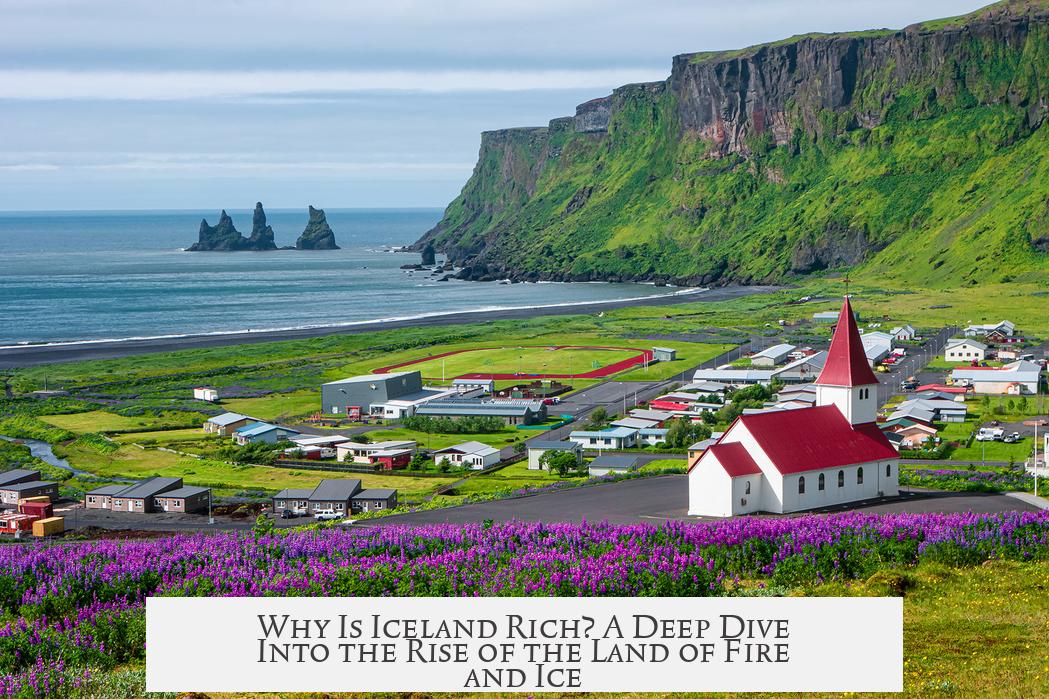
Iceland’s wealth is no accident. It’s a complex tale of overcoming historical hardship, extracting value from natural resources, clever political maneuvering, and a dash of luck mixed with pragmatism. Let’s unpack this fascinating journey step by step, revealing why this remote island nation transformed itself from a struggling colony into one of the richest places on Earth.
At first glance, Iceland might seem an unlikely candidate for prosperity. Harsh conditions, limited resources, and centuries of hardship cast a long shadow. But this resilient nation turned the odds around. How did they do it?
A Rocky Beginning: Centuries of Struggle
From the late 14th century onward, Iceland faced repeated cycles of plague and famine that kept its population below 100,000. This relentless attrition meant a fragile population, often too small to stimulate economic growth. Plus, the lack of large trees and self-sufficient shipping made development tough.
The ruling elite leaned heavily on farming—mostly sheep pasturing—but the agriculture was inefficient and low-yielding. Farming wasn’t enough to build real wealth. Meanwhile, a peculiar law called Vistarband legally bound landless peasants to farms, hindering coastal town growth and leaving fishing and trade minimal. This left Iceland largely isolated and underdeveloped well into the 19th century.
Imagine living on a remote farm, battling the elements, disease, and scarce resources with little hope for more than surviving. That was Iceland’s story for centuries. Efforts by the Danish Crown to modernize the island yielded negligible results. Iceland was pretty much stuck in a historical rut.
The Tide Turns: Fishing and Trade Take Center Stage
Things began to shift with the rise of global powers like the UK and the USA, who increased North Atlantic trade. Iceland’s talented new generation, inspired by European Enlightenment ideals, pushed for more autonomy, open trade, and liberalizing regulations like Vistarband.
The last quarter of the 19th century saw Reykjavík emerging into a proper town, with investments in harbors and coastal infrastructure. Governments prioritized fishing, acquiring vessels and merchant ships to build trade networks. Iceland’s foreign trade ties strengthened with the UK, the US, Canada, and even some Southern European countries, especially Spain.
Fishing wasn’t just a job; it became the cornerstone of Iceland’s industrialization. With home rule in 1904, Icelanders focused their economic policies on exploiting their rich marine resources. Exporting fresh and salted fish became the backbone of the national economy. This new focus jolted the country out of its agrarian slumber.
World Wars: Unexpected Catalysts for Wealth
World War I was tough on Iceland’s small economy. Shipping was disrupted, and imports became scarce. But politically, it was transformative. Iceland declared sovereignty in 1918, entering a personal union with Denmark and asserting its business autonomy.
Then came World War II—what Icelanders call the “blessed war.” Suddenly, their island was strategically vital to the Allies. British troops occupied Iceland in 1940, followed by an influx of up to 50,000 American soldiers by 1941—quite a surprise in a nation of only about 120,000 people!
This military presence turned the economy on its head. Roads, airfields, and communication networks were built, drawing Iceland out of isolation. War demands boosted fishing exports dramatically, especially cod, a staple in Allied diets. By war’s end, Iceland’s GDP jumped 38%, while much of Europe lay in ruins. This leap was a defining moment in Iceland’s economic evolution.
Post-War Growth Fueled by Smart Strategy
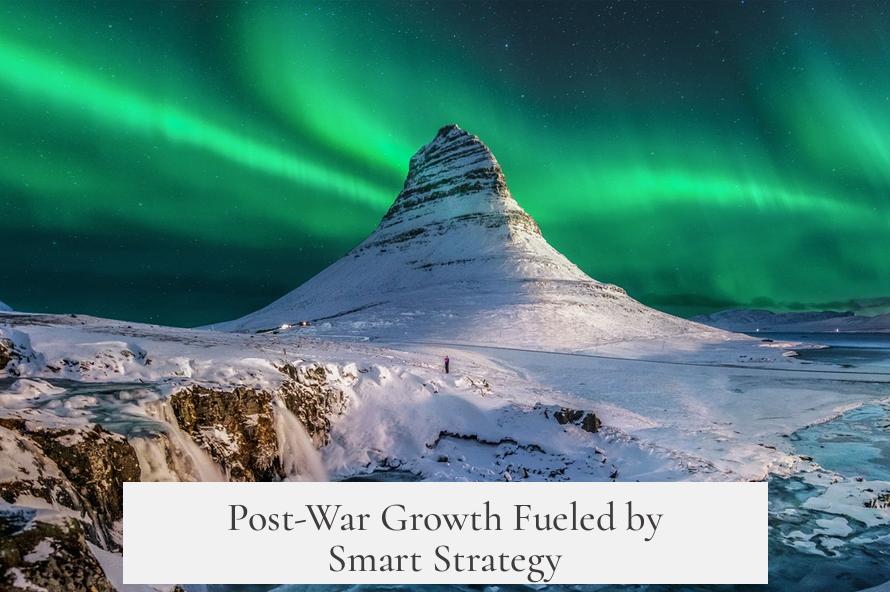
Following the war, Iceland gratefully received Marshall Plan aid—the highest per capita in Europe—between 1948 and 1953. But they didn’t just spend aid money piecemeal. They strategically invested in modernizing their fishing fleet, building processing plants, and expanding hydroelectric projects.
One of Iceland’s economic masterstrokes came with its exploitation of renewable energy. Using abundant geothermal heat and hydropower resources, Iceland transitioned away from costly coal imports. Homes warmed with volcanic hot water, electricity became cheap and clean, and new industries, like aluminum smelting, flourished thanks to reliable, inexpensive power. This energy independence diversified the economy beyond fishing.
Not everyone was happy with Iceland’s expanding maritime claims, though. The “Cod Wars” from the late 1950s into the 1970s were heated disputes with Britain over fishing rights. Iceland extended fishing limits from 12 miles in 1958 to 200 miles by 1975, fiercely defending them against British challenges. Eventually, Britain backed down, securing Iceland’s economic sovereignty over its fisheries—a win vital to the nation’s wealth.
Balancing Foreign Involvement Without Losing Control
Iceland’s current affluence also owes to savvy diplomacy during the Cold War. Positioned between East and West, Iceland managed to extract economic advantages from both sides without relinquishing control over its key industries and natural resources. This pragmatic balancing act ensured steady growth and maintained domestic governance over Iceland’s wealth.
Summing Up Iceland’s Wealth: A Mix of Luck, Strategy, and Resourcefulness
So, why is Iceland rich? A perfect storm of geographical luck, historical turns, and pragmatic decision-making paved the way. Their strategic location gained importance during global conflicts. The savvy use of foreign aid didn’t just patch problems but built modern infrastructure. The commitment to exploiting renewable energy resources made them a magnet for energy-hungry industries. Meanwhile, the expansion and defense of fishing grounds cemented economic independence.
It’s a story that reminds us: wealth can spring from harsh environments, persistent challenges, and smart policy choices. Iceland’s journey from plague-ridden isolation to a high-tech, energy-rich nation offers lessons in resilience and careful planning.
What Can Other Countries Learn from Iceland?
Is Iceland’s success replicable? Probably not in the exact way, but there are clear lessons:
- Harness Unique Assets: Iceland leverages its geothermal energy and rich fisheries rather than lamenting what it lacks.
- Invest Strategically: Aid and profits find their way into infrastructure and industries, not just short-term fixes.
- Balance Foreign Aid with Sovereignty: Iceland accepted help but maintained control over its resources.
- Adapt to Changing Global Contexts: From trade liberalization to wartime economics, adapting strategy to global dynamics is crucial.
At the end of the day, Iceland’s wealth is more than economic—it’s a story of survival, innovation, and seizing opportunities. Next time you enjoy Icelandic fish or hear about its green energy, remember the long road behind it—one marked by perseverance and smart choices shaping a small island’s giant leap into prosperity.
